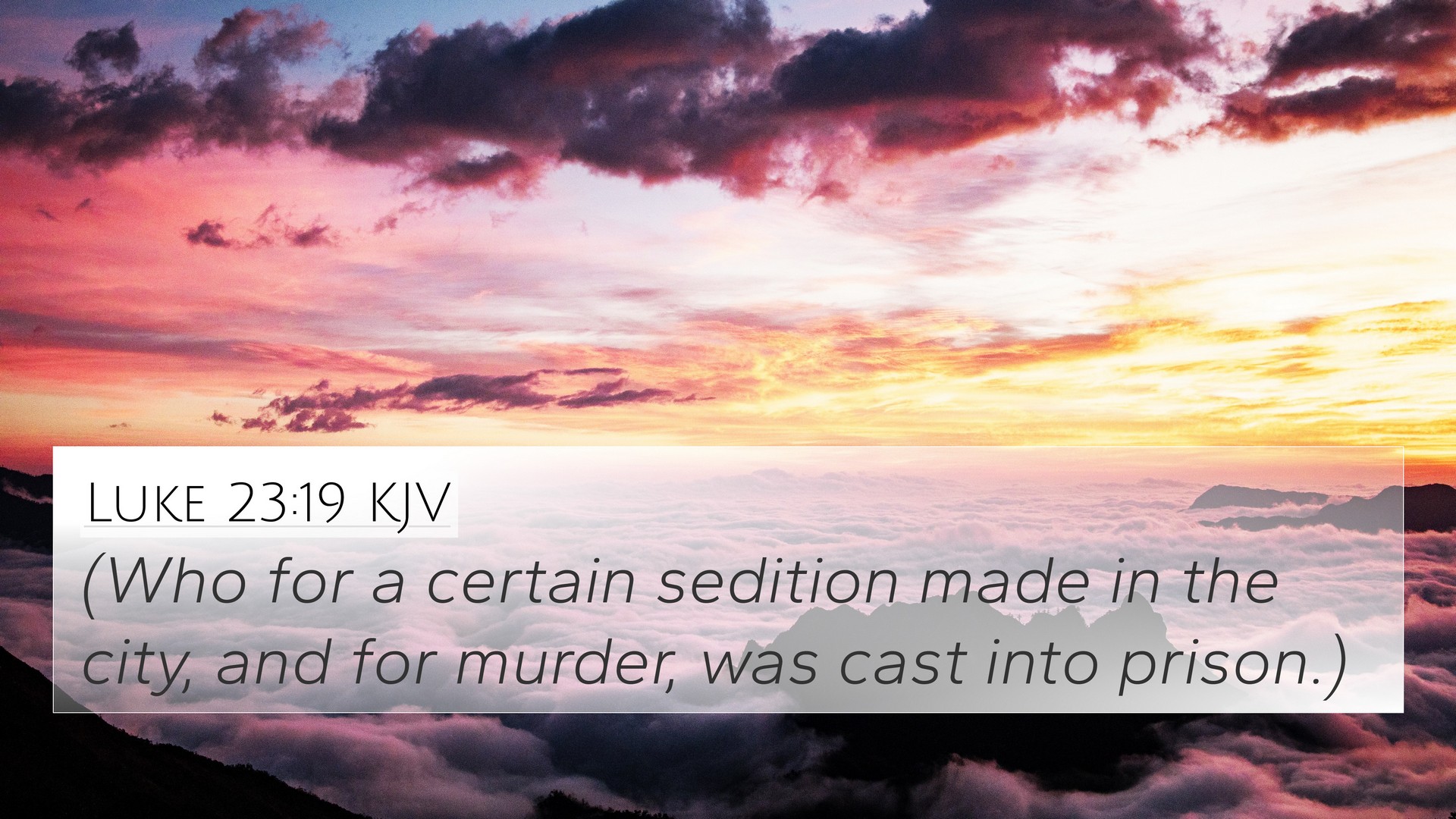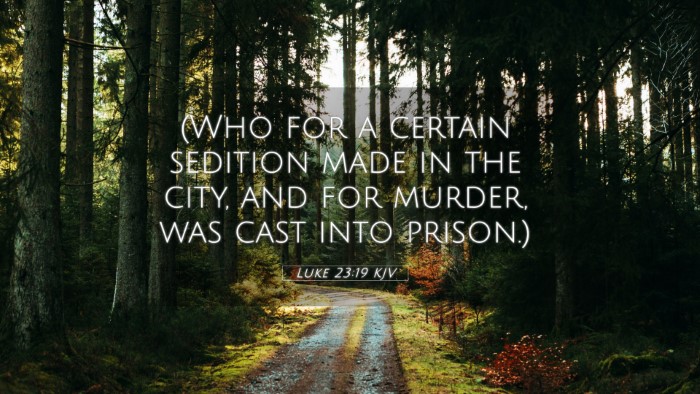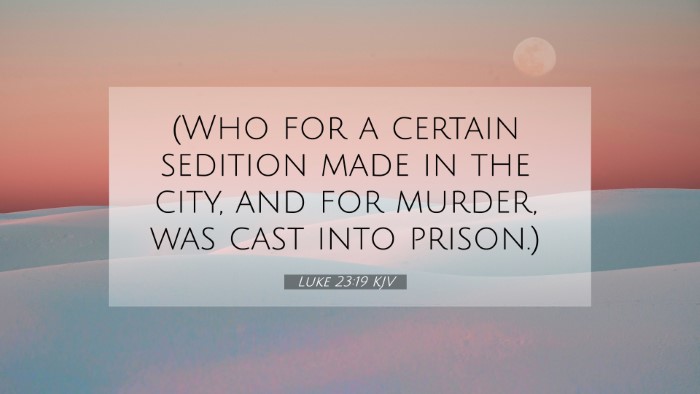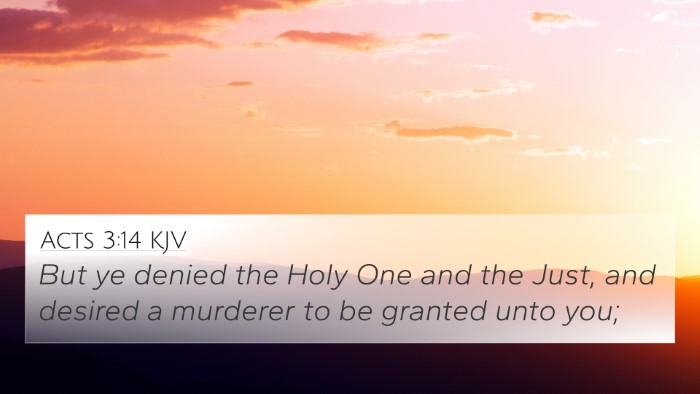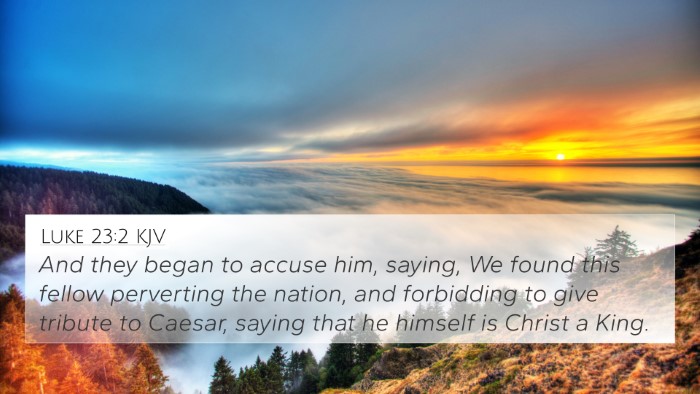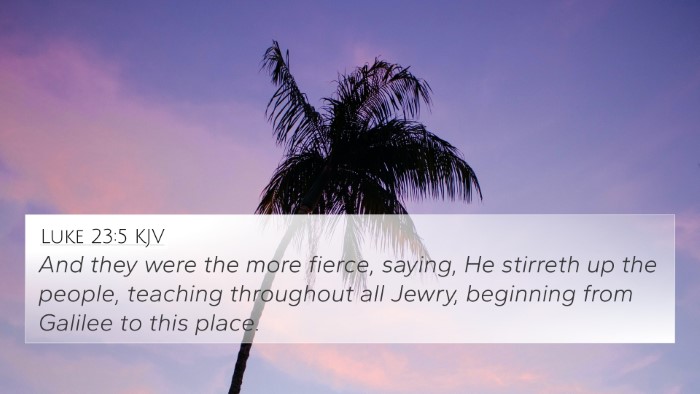Understanding Luke 23:19: A Comprehensive Analysis
Luke 23:19 states: "Who for a certain sedition made in the city, and for murder, was cast into prison, whom Pilate would have released." This verse occurs in the context of the trial of Jesus before Pontius Pilate, where Barabbas, a prisoner guilty of insurrection and murder, is mentioned.
Overview of Luke 23:19
This passage illustrates the gravity of the accusations against Barabbas and sets the stage for the pivotal choice facing Pilate. The mention of sedition and murder highlights the serious nature of Barabbas's crimes and contrasts sharply with the innocence of Jesus.
Key Themes and Interpretations
- The Innocence of Christ: The verse underscores Jesus's innocence in contrast to Barabbas. Pilate's desire to release Jesus points to an underlying injustice.
- Public Sentiment: The choice before the crowd further emphasizes the theme of societal pressures and the will of the people influencing judicial decisions.
- Prophetic Fulfillment: This moment fulfills the Old Testament prophecies concerning the Messiah, emphasizing that He would be rejected by His own.
- Sin and Redemption: Barabbas, representing sinful humanity, is chosen over the sinless Jesus, symbolizing the exchange of sin for righteousness.
Commentary Insights
Matthew Henry's Commentary
Henry discusses the irony of the situation, where a notorious criminal is preferred over the righteous Son of God. He notes that this reflects not just the judicial failure of Pilate but also the spiritual blindness of the people.
Albert Barnes' Notes
Barnes points out that the decision to release Barabbas instead of Jesus serves to illustrate the depths of human depravity and the rejection of divine authority. It serves as a poignant reminder of the tumultuous relationship between the kingdom of God and worldly leadership.
Adam Clarke's Commentary
Clarke elaborates on the historical context, explaining the nature of the sedition that led Barabbas to prison. He emphasizes the moral implications of choosing a revolutionary over a Messiah, highlighting the eternal choice faced by all mankind.
Cross-References
Luke 23:19 finds connections with several other verses throughout the Bible, enhancing the reader's understanding of the larger narrative. Here are some significant cross-references:
- Matthew 27:15-26: The parallel account of the events surrounding the release of Barabbas.
- John 18:40: Illustrates the public demand for Barabbas over Jesus.
- Isaiah 53:3: Prophecy of the suffering servant who will be despised and rejected.
- Acts 3:14: Peter refers to the choice between Jesus and Barabbas when preaching to the Jews.
- Luke 23:13-14: Pilate’s attempts to advocate for Jesus's release.
- John 19:16: The culmination of the trial leading to Jesus's crucifixion.
- Galatians 3:13: Christ redeeming us from the curse of the law, paralleling the choice offered to the crowd.
Practical Application
This passage invites self-reflection on how individuals respond to justice and authority. It raises questions about personal choices in the face of societal pressure and the implications of those choices on spiritual and moral grounds.
Conclusion
Luke 23:19 serves as a critical junction in the narrative of Jesus's trial, illustrating the stark contrast between innocence and guilt, divine purpose, and human failure. Through established cross-references, we discern deeper theological truths and broader connections within the Scriptures, emphasizing the need for careful study and reflection on such pivotal moments in the biblical narrative.
Further Study on Biblical Cross-Referencing
For those keen on exploring the connections between Bible verses and further engaging in comparative Bible verse analysis, consider studying the use of a Bible concordance or a Bible cross-reference guide. These tools can enhance understanding of thematic Bible verse connections and provide a clearer picture of the inter-Biblical dialogue present throughout Scripture.
